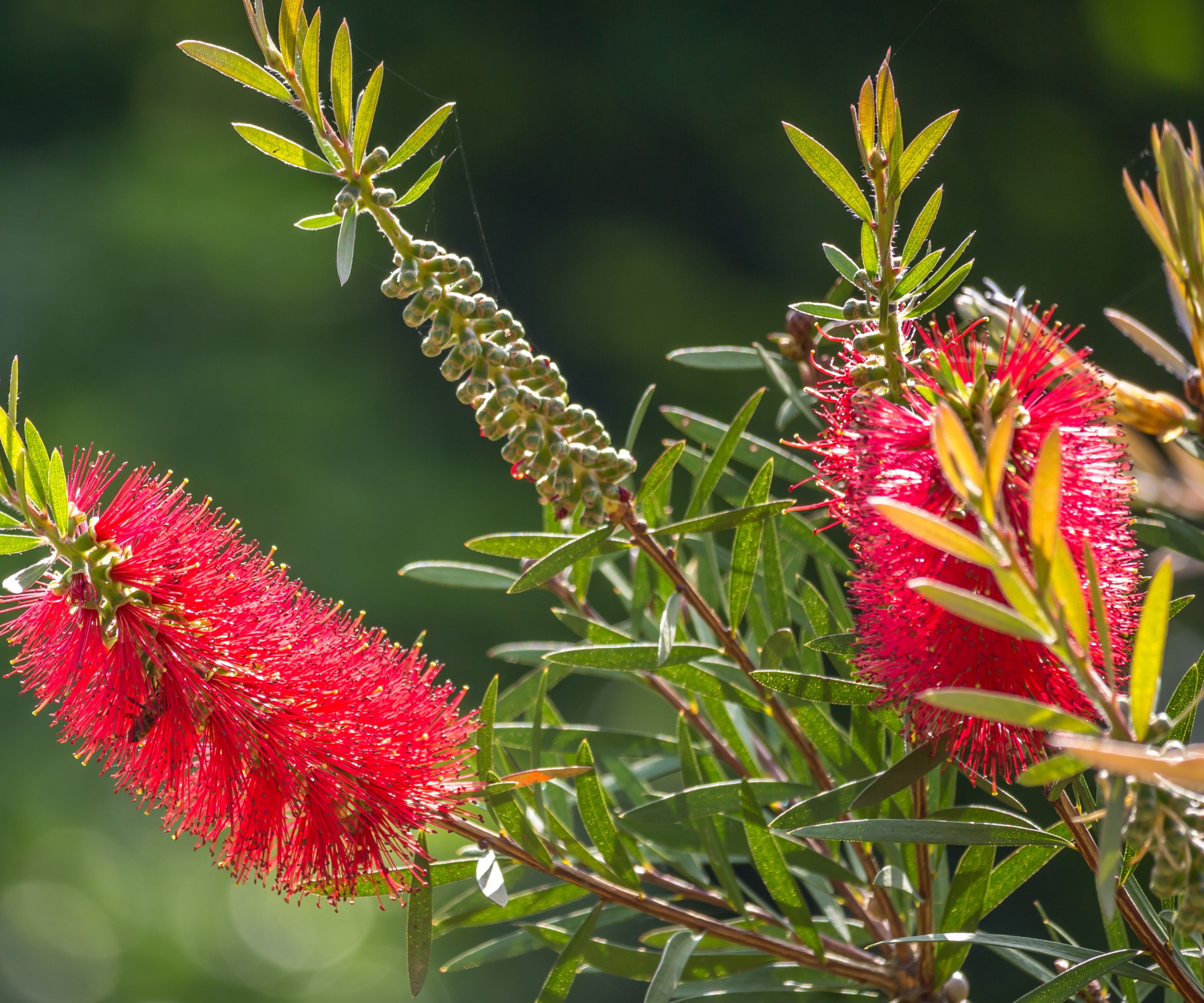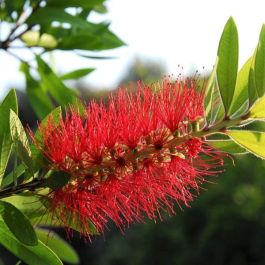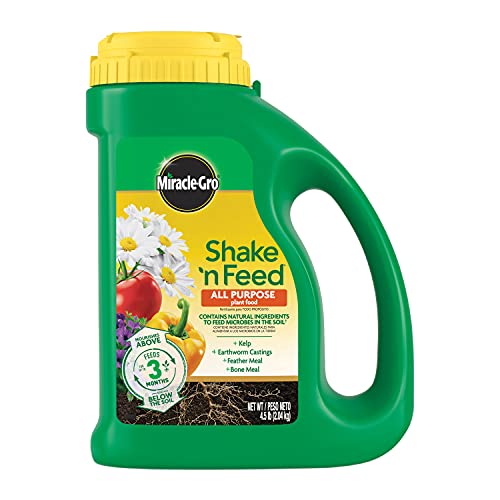How to grow a bottlebrush plant – for unusual and impactful crimson blooms
Add a tropical touch to your yard this year by planting a vibrant bottlebrush tree


Unusual, vibrant, and one of the best flowering shrubs for a sun-soaked border, the unmistakable bottlebrush is something of an attention-seeker in the plant world.
Belonging to the Callistemon genus, bottlebrush plants have crimson-red flowers that are famed for a frothy appearance, the result of each flower producing thousands of stamens. It is these stamens that give the plant its nickname, seeming brush-like on approach.
What's more, bottlebrush shrubs and trees are popular plants for pollinators, often seen buzzing and humming with insects during the height of summer. Here, tropical plant experts provide advice on how to grow bottlebrush trees in pots and broder, to add color and dramatic flowers to any yard.

How to grow a bottlebrush plant
Bottlebrush shrubs or trees can produce thousands of crimson blooms, marking the arrival of spring and summer each year. As well as standard bottlebrush sizes, available from Amazon, there are also dwarf Callistemon varieties, available from Walmart, which means that even if you have a small terrace or balcony, you can grow this attractive and unusual plant. For gardeners looking for tropical garden ideas, I think that the bottlebrush plant should be at the top of your plant wish list.
Things to know about bottlebrush plants

Native to Australia, bottlebrush plants are often considered some of the best fast-growing flowering trees and shrubs. 'Growing bottlebrush plants can be a rewarding experience, as they are known for their striking, brush-like flowers and ability to attract pollinators,' says Tatiana Anderson, plant expert and co-founder of Top Tropicals.
Bottlebrush plants grow best in US hardiness zone 8 to US hardiness zone 10 plus. 'They thrive in warm climates and can tolerate some light frost, but severe cold can damage or kill the plant,' Tatiana continues. What's more, there are relatively few bottlebrush tree problems, and this shrub tends to be pest and disease-free.
'Some bottlebrush species can grow quite large,' Tatiana adds, 'so it is best to provide enough space for them to spread without being crowded by other plants or structures.'
Design expertise in your inbox – from inspiring decorating ideas and beautiful celebrity homes to practical gardening advice and shopping round-ups.
These plants 'typically bloom in late spring to early summer,' Tatiana says, 'although in mild climates, they may have sporadic blooms throughout the year.'
'With crimson red, nectar-rich flowers, bottlebrush plants are popular with bees, butterflies, and birds, particularly hummingbirds, making them an excellent choice for a garden designed to support local wildlife.'

Tatiana Anderson is the co-owner and co-founder of Top Tropicals, based in Fort Myers, Florida. Top Tropicals grow and sell a whole range of flowering and fruiting tropical plants.
Growing advice for bottlebrush plants

- Soil: 'Bottlebrush plants prefer well-draining soil,' Tatiana says. 'While they are relatively tolerant of poor soil conditions, a sandy or loamy soil with good drainage is ideal.' Tatiana recommends avoiding planting in heavy clay soils, or only doing so when you have incorporated good-quality soil into your borders. If you are concerned about soil health, consider applying a soil improver, available from Amazon.
- Light: 'Bottlebrush plants require full sun to thrive,' Tatiana says. Native to Australia, Callistemon are sun-worshipping plants. 'Ensure they get at least 6 to 8 hours of direct sunlight per day,' Tatiana advises.
- Watering: Often considered one of the best drought-tolerant shrubs, bottlebrush trees - once established - can survive just fine through long, hot summers. However, 'during the establishment period, keep the soil moist,' Tatiana says. 'Once your plant has reached a good size, it will be quite drought-tolerant but will benefit from regular watering during dry spells.'
- Fertilizing: 'While bottle brush trees do not require heavy fertilization, a balanced, slow-release fertilizer applied in spring can promote healthier growth and more abundant blooms,' Tatiana recommends. 'Be cautious not to over-fertilize, as this can lead to excessive foliage growth at the expense of flowers.' Slow-release fertilizer is available from Walmart.
- Pruning: Tatiana recommends pruning your bottlebrush shrub or tree after flowering, in summer, which will 'help to maintain shape and remove any dead or diseased branches.' Doing so at this time will allow you to enjoy the blooms while keeping a compact shape with bushy growth.
FAQs
Can I grow bottlebrush shrubs in pots?
Yes, you can grow bottlebrush shrubs in containers. The long-flowering plants make a great addition to a pot display, often flowering for much of the spring and summer. I would suggest planting a dwarf variety, such as Callistemon viminalis 'Little John', which will grow to a height of 3 to 4 feet. Ensure that you incorporate plenty of drainage material when planting, and occasionally water your pots during the summer.
If you are looking to grow a unique flowering shrub this year, planting a bottlebrush tree is sure to add color and impact to any yard. For more tropical plant ideas, see our guide on how to grow an orchid tree, for an unusual flowering tree with striking blooms.

Thomas is a Content Editor within the Gardens Team at Homes and Gardens. He has worked as a professional gardener for both public spaces and private estates, specializing in productive gardening, growing food and flowers. Trained in Horticulture at the Garden Museum, he has written on gardening and garden history for various publications, including The English Garden, Gardens Illustrated, Hortus, The London Gardener and Bloom. He has co-authored a Lonely Planet travel book, The Tree Atlas, due out in 2024.

